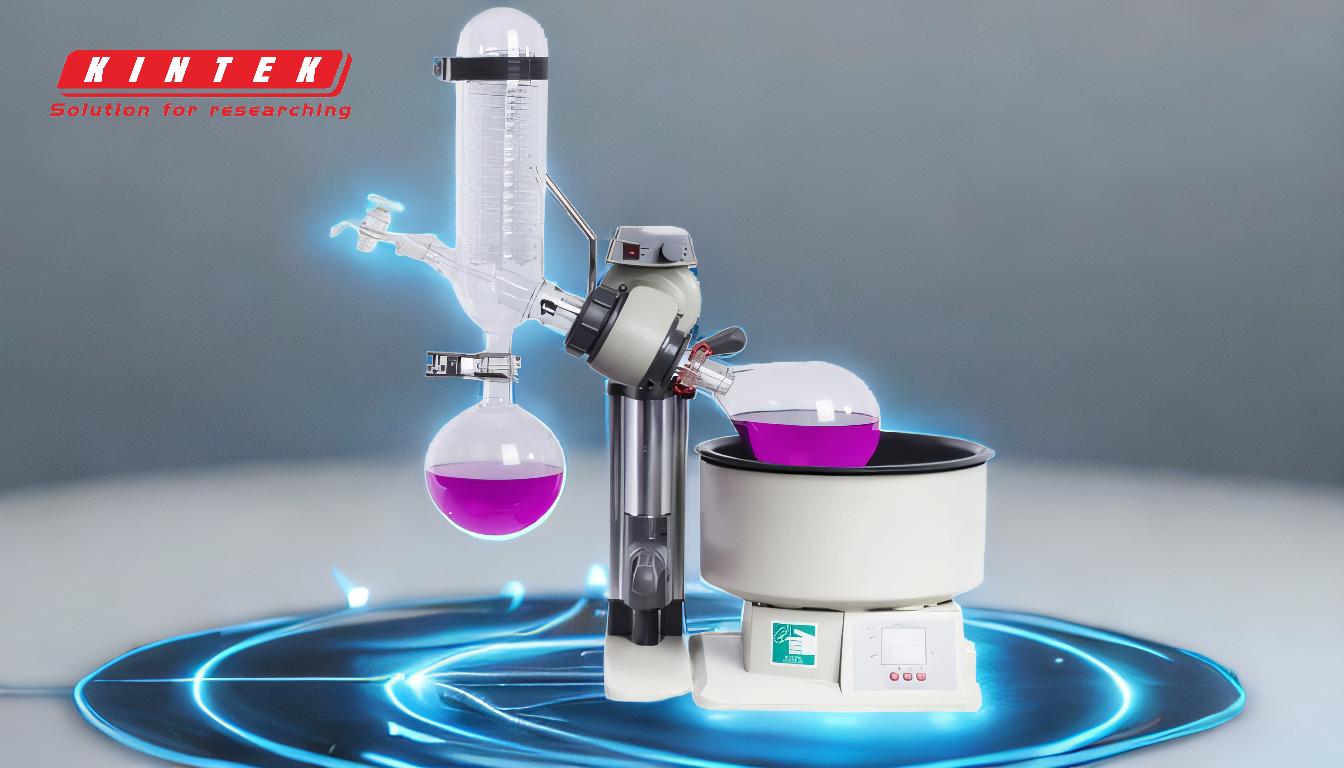Evaporators are essential equipment used across various industries to remove solvents or concentrate solutions by evaporating the liquid component. The most common types of evaporators include falling film evaporators, rising film evaporators, forced circulation evaporators, and vacuum evaporators. Each type is designed for specific applications, depending on factors such as the nature of the solution, required concentration levels, and operational efficiency. These evaporators are widely used in industries like pharmaceuticals, food and beverage, environmental management, and chemical processing. Understanding their differences and applications is crucial for selecting the right equipment for specific needs.
Key Points Explained:

-
Falling Film Evaporators:
- Design and Function: Falling film evaporators consist of vertical tubes where the liquid solution flows downward as a thin film while being heated. The heat causes the solvent to evaporate, leaving behind a concentrated solution.
- Applications: Commonly used in the food and beverage industry for concentrating heat-sensitive products like fruit juices, milk, and other liquids. They are also used in the pharmaceutical industry for concentrating active pharmaceutical ingredients (APIs).
- Advantages: High heat transfer efficiency, low residence time, and suitability for heat-sensitive materials.
- Limitations: Requires precise control of liquid distribution to ensure uniform film formation.
-
Rising Film Evaporators:
- Design and Function: In rising film evaporators, the liquid solution is heated as it rises through vertical tubes. The heat causes the solvent to evaporate, creating a mixture of vapor and liquid that exits the top of the tubes.
- Applications: Ideal for applications requiring high evaporation rates, such as in the chemical and pharmaceutical industries. They are also used in the environmental sector for wastewater treatment.
- Advantages: High evaporation rates, suitable for viscous solutions, and effective for large-scale operations.
- Limitations: Higher energy consumption compared to falling film evaporators and less suitable for heat-sensitive materials.
-
Forced Circulation Evaporators:
- Design and Function: Forced circulation evaporators use a pump to circulate the liquid solution through a heat exchanger, where it is heated and partially evaporated. The mixture of vapor and liquid is then separated in a flash chamber.
- Applications: Widely used in industries dealing with highly viscous or fouling solutions, such as chemical processing, salt production, and sugar refining.
- Advantages: Effective for handling viscous and fouling solutions, high heat transfer rates, and reduced scaling issues.
- Limitations: Higher energy consumption due to the need for a circulation pump and increased operational complexity.
-
Vacuum Evaporators:
- Design and Function: Vacuum evaporators operate under reduced pressure, which lowers the boiling point of the liquid, allowing evaporation at lower temperatures. This is particularly useful for heat-sensitive materials.
- Applications: Commonly used in the pharmaceutical industry for concentrating APIs, in the food industry for concentrating juices and extracts, and in environmental applications for wastewater treatment.
- Advantages: Low-temperature operation preserves the quality of heat-sensitive materials, energy-efficient due to reduced boiling points, and suitable for a wide range of solvents.
- Limitations: Requires a vacuum system, which adds to the complexity and cost of the equipment.
-
Selection Criteria for Evaporators:
- Nature of the Solution: The viscosity, fouling potential, and heat sensitivity of the solution are critical factors in selecting the appropriate evaporator.
- Operational Efficiency: Energy consumption, heat transfer efficiency, and ease of maintenance are important considerations.
- Scale of Operation: The required capacity and scalability of the evaporator should match the production needs of the industry.
- Regulatory Compliance: In industries like pharmaceuticals and food, compliance with regulatory standards for product quality and safety is essential.
-
Industry-Specific Applications:
- Pharmaceutical Industry: Falling film and vacuum evaporators are commonly used for concentrating APIs and other heat-sensitive compounds.
- Food and Beverage Industry: Falling film and rising film evaporators are preferred for concentrating juices, milk, and other liquid products.
- Chemical Industry: Forced circulation evaporators are widely used for handling viscous and fouling solutions.
- Environmental Sector: Vacuum evaporators are employed in wastewater treatment to concentrate and recover valuable materials.
In conclusion, the selection of the most common evaporators depends on the specific requirements of the industry and the nature of the solution being processed. Each type of evaporator offers unique advantages and limitations, making it essential to carefully evaluate the operational needs and constraints before making a decision.
Summary Table:
| Type of Evaporator | Key Applications | Advantages | Limitations |
|---|---|---|---|
| Falling Film Evaporators | Food & Beverage, Pharmaceuticals | High heat transfer, low residence time | Requires precise liquid distribution |
| Rising Film Evaporators | Chemical, Pharmaceuticals, Environment | High evaporation rates, large-scale use | Higher energy consumption |
| Forced Circulation | Chemical, Salt, Sugar Refining | Handles viscous/fouling solutions | Higher energy, operational complexity |
| Vacuum Evaporators | Pharmaceuticals, Food, Environment | Low-temperature operation, energy-efficient | Requires vacuum system, higher cost |
Need help selecting the right evaporator for your industry? Contact our experts today!











